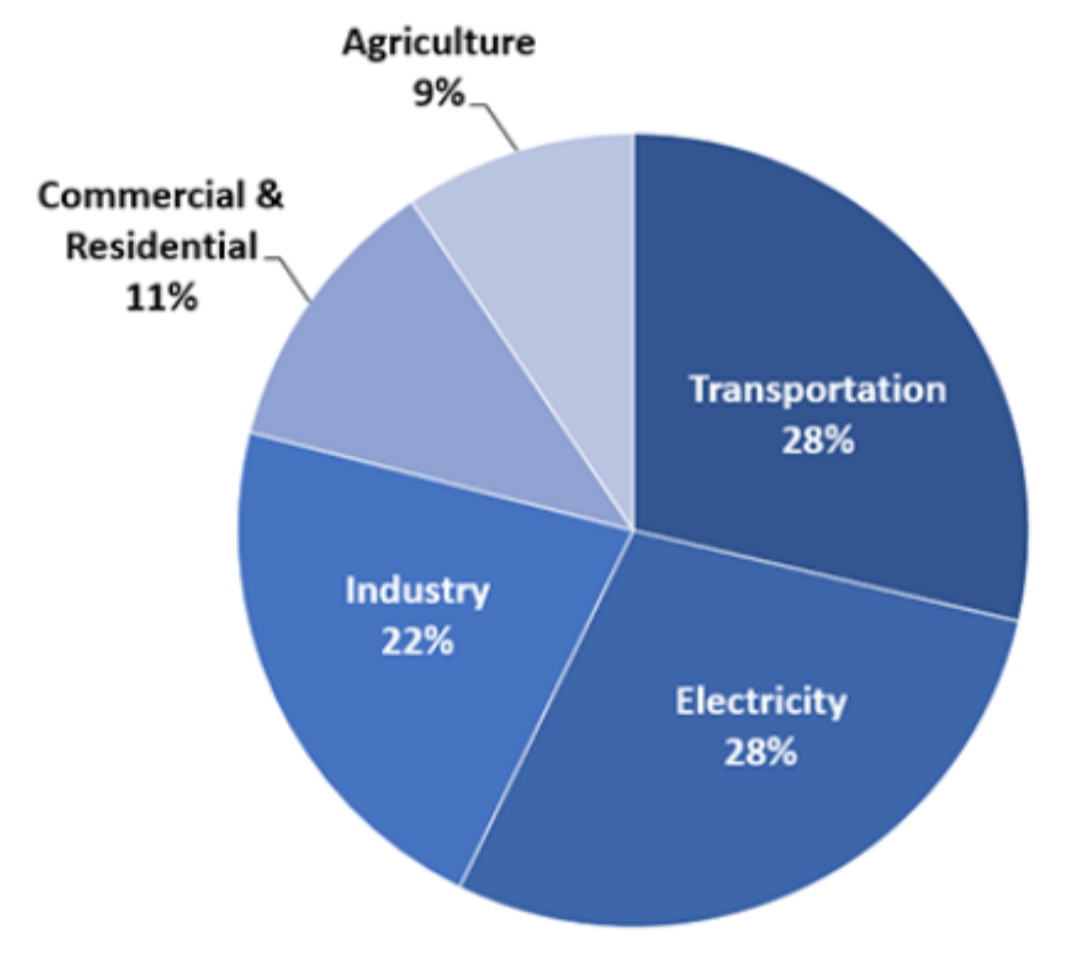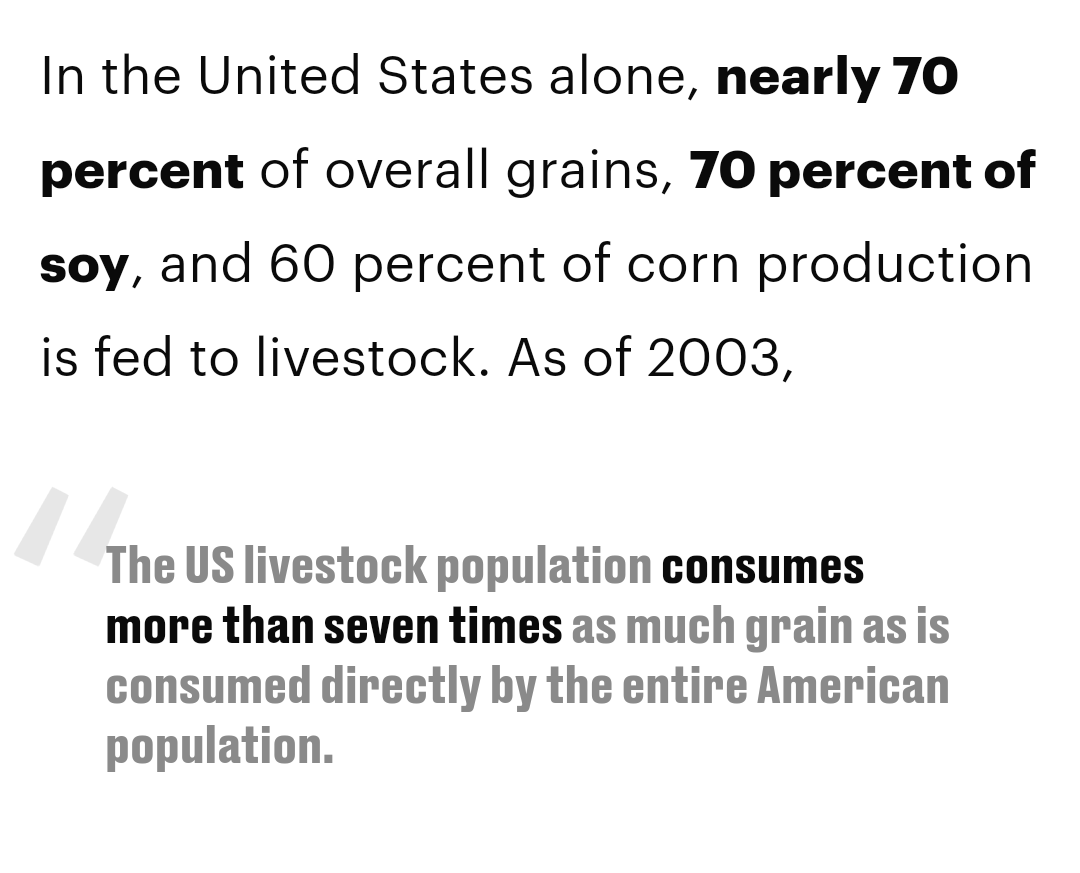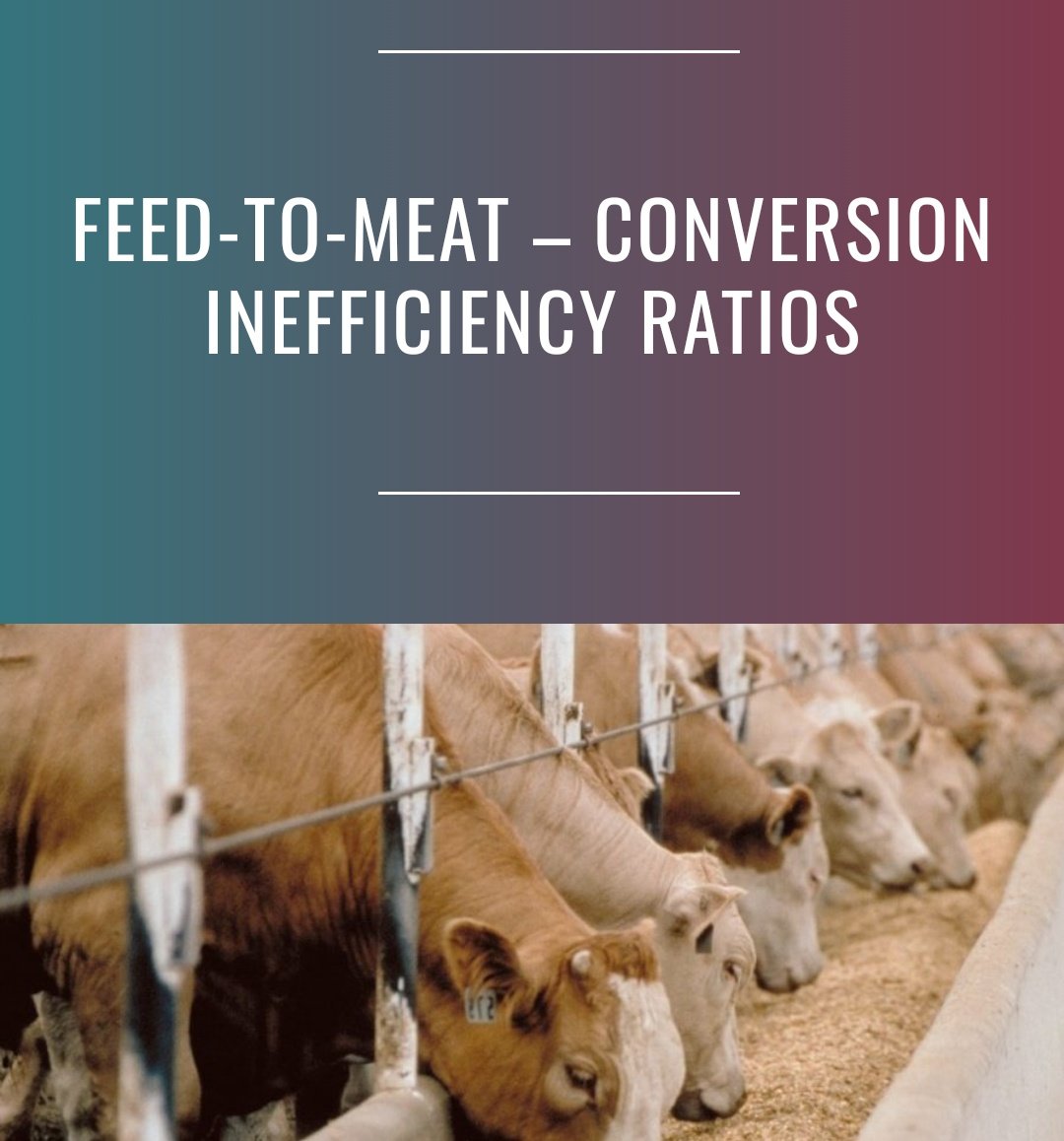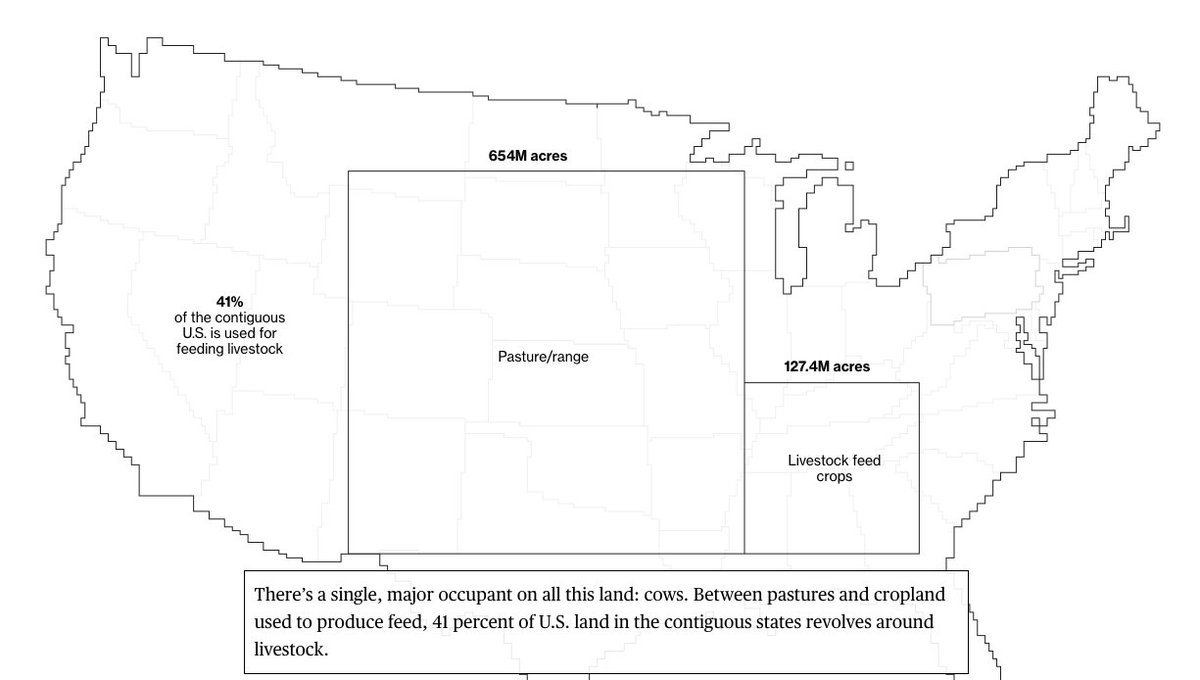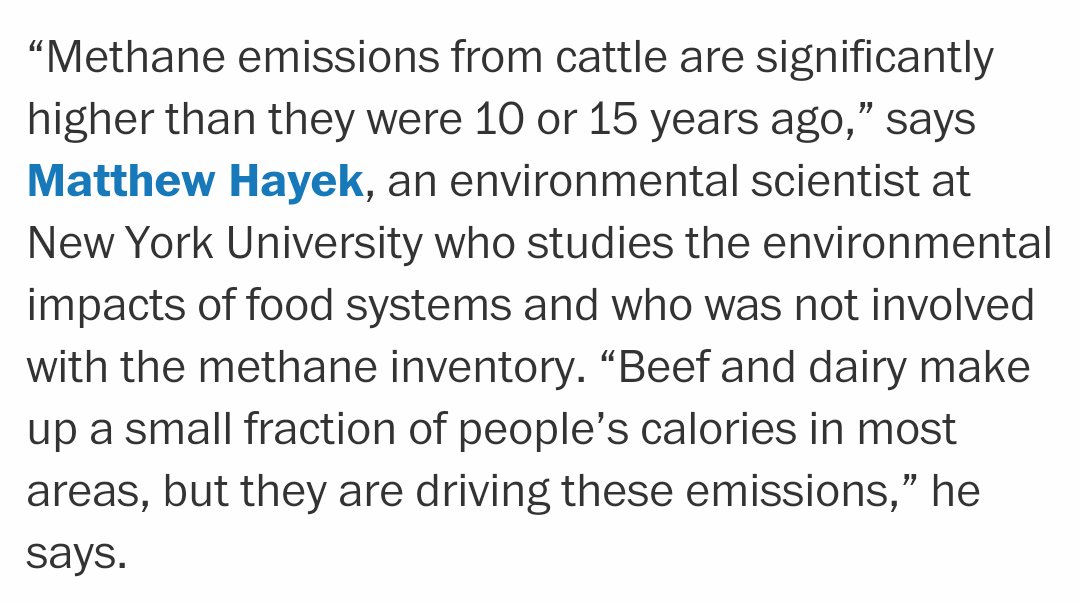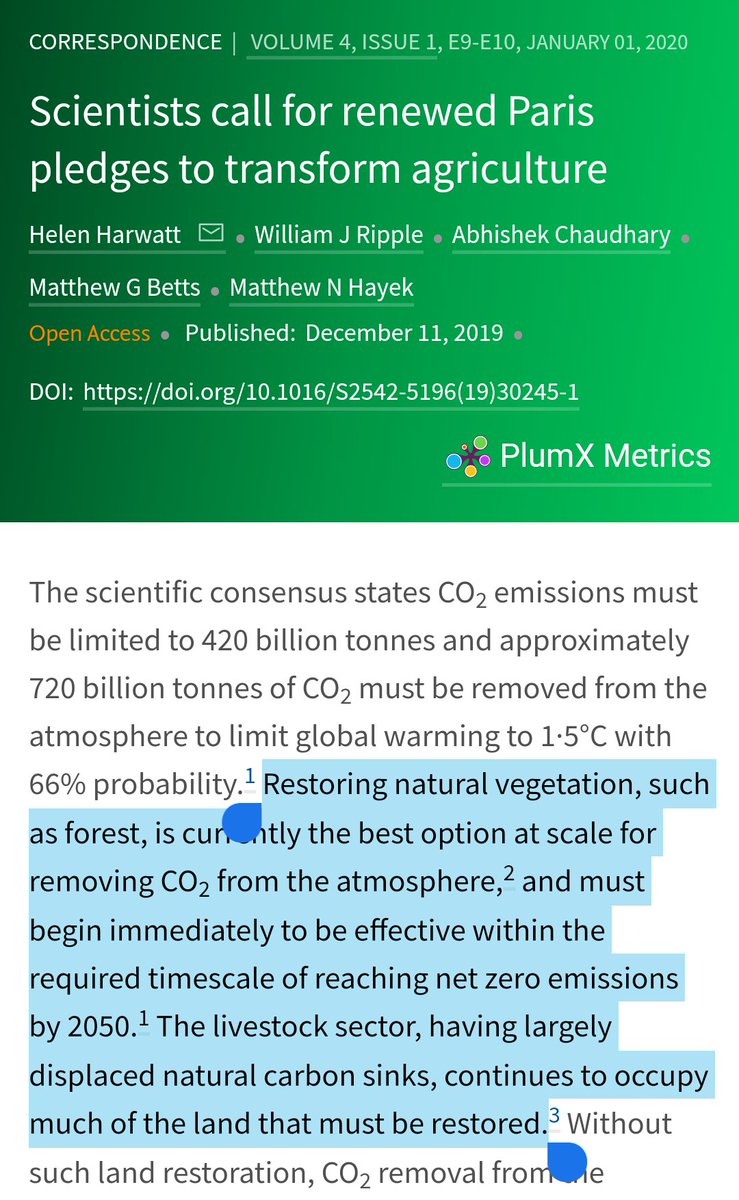Livestock production is often said to be responsible for only 4.2% of total U.S. GHGs. This is an EPA figure so many assume it& #39;s accurate.
But this calculation doesn& #39;t account for several direct and indirect GHGs, and this narrow metric fails to show the full picture.
THREAD
But this calculation doesn& #39;t account for several direct and indirect GHGs, and this narrow metric fails to show the full picture.
THREAD
Firstly, the 4.2% figure *does not* include the production of animal feed and forage.
That& #39;s like saying the GHGs from trucks are minimal, without mentioning that the emissions from gasoline weren& #39;t included in the estimate.
Feed and forage, according the USDA and FAO:
That& #39;s like saying the GHGs from trucks are minimal, without mentioning that the emissions from gasoline weren& #39;t included in the estimate.
Feed and forage, according the USDA and FAO:
This isn& #39;t a minor forgotten aspect since it includes vast amounts of N2O emissions, land use change, and deforestation, some of which is in other countries.
And growing crops, to cycle through animals, is often assumed as an efficient process. It& #39;s not:
https://twitter.com/NicholasDCarter/status/1213436476203130880?s=19">https://twitter.com/NicholasD...
And growing crops, to cycle through animals, is often assumed as an efficient process. It& #39;s not:
https://twitter.com/NicholasDCarter/status/1213436476203130880?s=19">https://twitter.com/NicholasD...
Why is feed conversion ratio important?
1. This is food waste
2. Feedcrop land could easily grow food for human consumption.
3. The gains in land by not having feedcrops can be a major help in addressing climate & biodiversity crises.
https://awellfedworld.org/feed-ratios/ ">https://awellfedworld.org/feed-rati...
1. This is food waste
2. Feedcrop land could easily grow food for human consumption.
3. The gains in land by not having feedcrops can be a major help in addressing climate & biodiversity crises.
https://awellfedworld.org/feed-ratios/ ">https://awellfedworld.org/feed-rati...
We could reduce feedcrop use by shifting to grass-finished ruminants, but this increases land use, CH4, & other issues, while rarely coming with the  https://abs.twimg.com/emoji/v2/... draggable="false" alt="⬇️" title="Pfeil nach unten" aria-label="Emoji: Pfeil nach unten"> meat consumption msg.
https://abs.twimg.com/emoji/v2/... draggable="false" alt="⬇️" title="Pfeil nach unten" aria-label="Emoji: Pfeil nach unten"> meat consumption msg.
Why land use is such an important and overlooked metric:
https://dash.harvard.edu/handle/1/37260135">https://dash.harvard.edu/handle/1/... https://twitter.com/NicholasDCarter/status/1303113790087716865?s=19">https://twitter.com/NicholasD...
Why land use is such an important and overlooked metric:
https://dash.harvard.edu/handle/1/37260135">https://dash.harvard.edu/handle/1/... https://twitter.com/NicholasDCarter/status/1303113790087716865?s=19">https://twitter.com/NicholasD...
Yes, there have been improvements with some methods of farming animals in the US.
No, it isn& #39;t substantial when compared to shifts to plant based production and consumption.
But isn& #39;t cattle the best use of marginal land? No, there& #39;s many better uses.
https://twitter.com/NicholasDCarter/status/1283046763721625609?s=19">https://twitter.com/NicholasD...
No, it isn& #39;t substantial when compared to shifts to plant based production and consumption.
But isn& #39;t cattle the best use of marginal land? No, there& #39;s many better uses.
https://twitter.com/NicholasDCarter/status/1283046763721625609?s=19">https://twitter.com/NicholasD...
Lastly, methane is key in this story. Many disagree with me here but our most commonly used 100 year Global Warming Potential timeline for methane, for this short-lived but very strong GHG, devalues its already underestimated (see below) impact by 2.5X
http://doi.org/10/drx3 ">https://doi.org/10/drx3&q...
http://doi.org/10/drx3 ">https://doi.org/10/drx3&q...
Be suspicious of non-LCA studies with claims that grasslands may sequester more carbon than forests.
1. That& #39;s grasslands, not pastureland w/ increased methane.
2. One Cali study was, surprise surprise, from an author with dairy ties.
Here& #39;s the reality:
https://www.thelancet.com/journals/lanplh/article/PIIS2542-5196(19)30245-1/fulltext">https://www.thelancet.com/journals/...
1. That& #39;s grasslands, not pastureland w/ increased methane.
2. One Cali study was, surprise surprise, from an author with dairy ties.
Here& #39;s the reality:
https://www.thelancet.com/journals/lanplh/article/PIIS2542-5196(19)30245-1/fulltext">https://www.thelancet.com/journals/...
Also consider what per capita consumption patterns signal to others.
The typical U.S. citizen consumes meat/dairy/eggs at roughly 3X the global average, using nearly 2X the agricultural land use & GHGs, 80-90% of which are related to animal-sourced foods: https://www.wri.org/publication/shifting-diets">https://www.wri.org/publicati...
The typical U.S. citizen consumes meat/dairy/eggs at roughly 3X the global average, using nearly 2X the agricultural land use & GHGs, 80-90% of which are related to animal-sourced foods: https://www.wri.org/publication/shifting-diets">https://www.wri.org/publicati...

 Read on Twitter
Read on Twitter